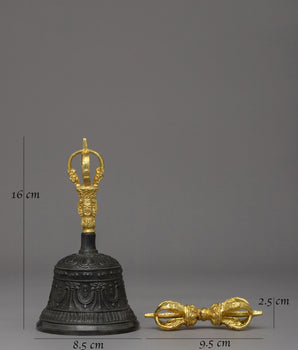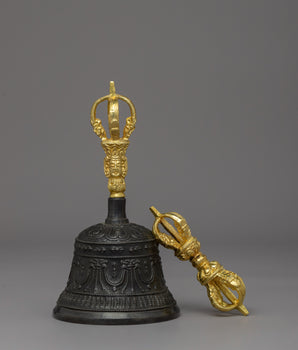From Prince to Novice: The Life Journey of Rahul
When we speak of the Buddha, the image that comes to mind is the dramatic performance of how the Buddha attained enlightenment under the Bodhi tree, the invaluable teachings that accompanied it, and the monastic order, the Sangha, which spread his teachings across the globe. But not so loudly or melodramatically; running through this militant spiritual epic is a more minor, yet more personal and less frequently related chronicle: the story of the Buddha and his only son, Rahul. Siddhartha Gautama led a life between two worlds: he would inherit a kingdom he would never rule, and be a monk, a novice in a way of discipline no one would want to follow. Whereas the Buddha went outside the palace walls to find the truth, he was abandoned to become a symbol of silence after the outcome of the decisions he made. Eternal Fixer, and yet, eventually, he would also follow the path of renunciation. Abandonment, but by the power of radical personal change, as a silent yet immovable presence in the Buddhist tradition.
A Birth Marked with Farewell

Rahul was born c. 534 BCE or 451 BCE into the world when Siddhartha decided to abandon the palace and begin his spiritual journey. This incredible coincidence has created one of the most touching moments in Buddhist legends, when a son is born into the world and his father is leaving it. The word Rahul is translated as both "fetter" and "bond" and has always been interpreted as a reference to the chains one is bound to his life. The birth of his son to Siddhartha was not only a happy one, but also a reminder that he had something to lose in returning to the life he felt he could no longer live.
It portrays the agonizing spiritual struggle that Siddhartha underwent when he decided to leave his position as a man, husband, and father to find the emancipation of all beings, including his family. When he named his son Rahul, Siddhartha was aware of the seriousness of the act to which he was giving up. It was a gesture full of both sorrow and wisdom-the statement that the path through enlightenment would entail the most demanding requirements. Their connection, therefore, did not end at the birth of Rahul, but rather, it is a journey where, on one day, their relationship will change to become a Dharma.
The Silent Years
Rahul was born in the palace, where he spent the first phase of his childhood in the absence of his father, Siddhartha, who had already begun his journey to enlightenment. Rahul’s mother, Yasodhara, was a woman of grace, quiet dignity, and unwavering strength, under whose shadow he was raised. Yasodhara was deeply hurt by the fact that her husband had left home; however, resentment never took hold of her. Instead, she reared her son with compassion and wisdom to accord him not only royal privilege, but the strength of heart to cope with the vicissitudes of a life of unanswered questions.
Spiritual awakening was seeded in such silence, though. As Rahul reached his age, the nervousness of not knowing about his father could not have been far away. He appears to have turned inward, rather than giving in to bitterness or the white noise of confusion, creating a silent meditation and the desire to know where that path had taken his father. Smothered in the riches of palace life but pensively affected by the void it left behind, the early years of Rahul became an unconscious preparation for the path that, so many years later, was to lift him out of royalty and into the essence of the Dharma.
A Meeting That Changed Everything

Many years later, after his renunciation, the Buddha did visit Kapilavastu, but he did not go there as a prince but as an awakened teacher. His meeting with his family was genuinely moving, but not dramatic. Not hastefully moving forward, did Yasodhara pursue the man who thus had deserted her in the past: still dignified, still calm. She sent her son Rahul rather than meet his father. This little boy came to the Buddha, and either because of his Taoist mother or out of his naive desire, he received from the Buddha what he wanted as his heritage. Royal wealth or political power was not available to him, as the Buddha had something much better to offer him: a gift of Dharma.
At that moment, the new legacy was born. Buddha drew the attention of his chief disciple, Sariputta, to ordain Rahul as a novice monk. At the tender age of about seven, Rahul joined the monastic life and became the first samanera (novice) in the history of the Sangha. This was not a ritual act, but the founding of a new generation, not blood but of spiritual rebirth. The ordination of Rahul marked a tradition that continues to this day in Buddhist cultures, and young boys are offered the chance to join the monastic life to learn the teachings of the Buddha, as was done with Rahul by his father.
The Novice Ordination Ceremony: A Living Legacy in Nepal

Novice ordination is a critical traditional spiritual practice in Nepal, especially among the Newar Buddhists and the Himalayan Tibetan Buddhist communities. This ceremony, known as “Bare Chuyegu” among the Newars, is prompted by the ordination of Rahul and is open to young boys, who, usually at the age of seven, are asked to enter the order temporarily. The ceremony involves shaving the head, wearing monastic robes, and the official reception of the Three Jewels: the Buddha, the Dharma, and the Sangha. In the ceremony of the Bare Chuyegu, the young boy holds a golpa (begging bowl) and the danda (ritual stick or staff) gravely to show his willingness to join the monastic life and be on the path of the Buddha.Additionally, participants receive the Ten Precepts and learn the rules of moral conduct, self-control, and mindfulness.
The ordination may take a few days to weeks, and its effects are permanent. It also provides young boys with a firsthand approach to monastic life, as experienced by Rahul, whose father is the Buddha. This is not merely a rite of passage but is also regarded by families as a high act of merit and a form of cultural pride. The living tradition remains an inspiration and nourishment for the spiritual lives of young generations in Nepal.
The Training of a Prince-Turned-Monk

Rahul was accorded an outstanding education in the Dharma under the watchful leadership of one of the Buddha's chief students, Sariputta, and the Buddha himself. The Buddha would often take the example of his son and emphasize the virtues in life that are crucial, such as mindfulness, humility, and, most importantly, truthfulness. In a famous discourse called the Ambalatthika-Rahulovada Sutta, the Buddha explains to a disciple named Rahul how crucial the trait of honesty is, likening a lie to upsetting a water pot once it has spilled; once solid, its purpose is now defeated, and its value is lost. This dogma demonstrates that integrity is a root of the spiritual journey.
The training that Rahul got did not even resemble the ceremonial one; it was intense and dramatically life-changing. He grew to be an eminent monk with sound judgment and integrity through rigid discipline and devoutness. He was not merely a symbolic figure because Rahul attained arahantship, the highest stage of liberation, at an early age. His walk has been a great example of the potential of spirituality among young people, and it continues to inspire the younger generations through the example of a son who, despite all the odds, followed the historical path his father had taken to achieve enlightenment.
Rahul Legacy: A Quiet Flame
The experience of Rahul itself may not be characterized by a dramatic awakening as that of his father, or the importance of such disciples as Mahakashyapa or Ananda. Still, it has its weight, and its significance is intimate. The current narrative of his life allows us to reflect on the more silent, intimate side of the Buddhist path— that inner dimension of change, healing, and tenderness. This implies that there can be an opportunity to turn the turning of one's back into growth, and to discover an abysmal love and relationships even in the seemingly given-up darkness of worldly connections.
Better than a prince without a kingdom, Arhat Rahul was a custodian of a much greater legacy, the Dharma. As a living compromise between family demands and spiritual truth, he presents the fragile construction created between human bandings and the pursuit of freedom. Speaking of his legacy, there is a soft, yet burning, fire that he has left behind as a reminder that the journey of awakening is not only about awakening, but also about self-healing and transformation.
Modern Interpretation of Rahul

The world in our time is rapidly developing, and in this modern era, where family traditions, social standards, and hereditary ties often shape our identities, the story of Rahul resonates very closely with our own. His life challenges us to consider and take the time to think about what is essential in the legacy left behind, not riches, rank, or heritage, but things that are as important as value, such as wisdom, understanding, caring, or being able to craft our way. To the young people who are trying to discover themselves and find hard to exist in the ambience of family situations, parents whose life and personality are in the process of balancing between responsibilities and self-culture, and it might be everyone who tries to match inner values with outer expectations, the example of Rahul is encouraging. He demonstrates that one needs to be able to traverse dense emotions, such as love, rejection, and anticipation, and reformulate them into spiritual strength to achieve self-discovery.
Although Rahul may not be an outstanding character in canonical Thangka art or most frequently mentioned sutras, the particular value lies in the human story behind the palimpsest of Buddhist precepts. His appearance reminds one that the shadows of some great enlightenment still cannot dissolve the light of the small process of personal revelation, which appears the brightest of all. The individual component of this is easily lost in larger religious imagery, and it is due to this close aspect that Rahula can be seen as an eternal figure to anyone seeking a balance between tradition and individual self-discovery.
Conclusion
Rahula's life is an excellent testament to the fragility of worldly forces and the pursuit of spiritual liberation. Even though it is usually eclipsed by the larger-than-life account of the Buddha's enlightenment, the story of Rahula, who underwent a transformation from being a prince to a monk and experienced healing, as well as a search for truth, is one of those experiences that are intensely personal. His heritage still survives not only in the form of early books and monastery practices but also in the current rites of novice ordination, which foster thousands of new followers across countries, including Nepal. The narrative going on about Rahula in the modern world makes us think of what is necessary in inheritance with our memory still saying that there is the necessity to look beyond lineage as well as social-status power that we have to remember, the absolute best that we can leave behind us as legacy is the wisdom as well as compassion that we develop in our character as individuals.















